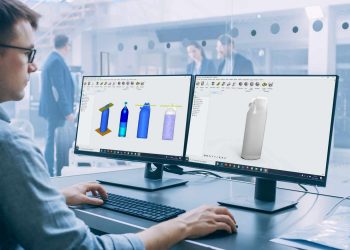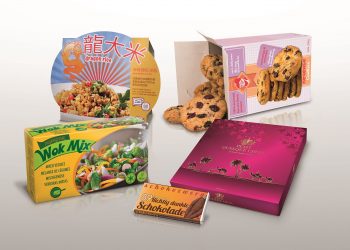Designers have shaped economic value in the world, but NOW is the need to add the Ecology Value. The reduce, reuse, and recycle mantra is not new but with increasing damage done by plastic harming the environment, it raises a red flag to think harder for GREEN solutions which heads towards becoming todays design trends.
Loads of companies are now pledging to use 100% reusable, recyclable or compostable packaging by 2025. Environmentally friendly design challenges the designer to come up with innovative solutions which probably existed before the plastic era. It helps both the producer and the consumer reduce their environmental impact. Designers have a responsibility of not only good looking but very importantly functionally good designs too. It’s a clever way to increase the value of any product and the overall customer experience. By incorporating alternative uses into packaging designs, whether related to the product or not, brands can improve product interaction so that the experience is naturalistic and unobtrusive.
From a designer’s perspective, a sustainable packaging design is something which exists constantly. It’s not necessarily end state but a continuing process of improvement.
Making GREEN a reality begins with small steps. An entire system change can only happen when wide networks of people are conscious and make informed decisions. Designers are definitely interested in moving towards a fully sustainable future. It’s time for designs that are creative, abundant, prosperous, and intelligent from the start. Like the earth’s nutrient cycles, the flow of materials eliminate the concept of waste. (cradle-to-cradle rather than cradle-to-grave.) Materials used are conceived as nutrients (that can be safely returned to soil through a degradation process) and designed to circulate safely and productively.

Case Study:
San Francisco Airport (SFO) is going to be the FIRST triple zero airport in the world!
San Francisco Airport (SFO) initiated the concept of ZERO WASTE by 2021, and well on their access to accomplishing their goals. SFO has undoubtedly done their preparation, and after analyzing the data, they are now advancing genuine solutions. It involves bottled water that is made out of 100% recyclable/reusable packaging material such as aluminium and glass, which are part of a closed-loop recycling system and also leaching free material. Aluminium and glass have so many advantages over plastic in terms of quality rather than recycling.
So, PATHWATER thinks concerning the people and environmental health, which not only provides travellers with purified water in an aluminium bottle but also promotes sustainability efforts to a whole new level. The company giving a water bottle that is genuinely affordable, durable, and REUSABLE – an experience no other bottled water has focused on.

So how does one go about it?
Sustainability often goes hand in hand with cost reductions if it is implemented at the design stage to reduce packaging size and material use.
Keep working to reduce packaging material within the limits allowed by its purpose. And if, as with some initiatives, you start a new product line with reduced packaging and therefore reduced product shelf-life, loudly communicate it to customers and continue to help them understand the reasoning behind the changes to make sure that the net benefits outweigh the drawbacks. Life cycle thinking, as always, helps.
As mentioned, achieving a sustainable packaging goal is a challenging and a complex process. In order to reach this goal, tools and procedures should be considered to ensure that the production process is moving forward to achieve this goal.
The following is a thought process that can be worked upon to arrive at a solution to a given product packaging

Sustainable Packaging in India
Our government and honourable Prime Minister have taken a thought lead in this area and we as designers could contribute to realising this dream and taking a global lead. While designers shall work hard with this objective, there is a need for a complete eco-system. Materials, suppliers, manufacturers, applicators, economics, etc have all to go hand-in-hand to create an eco-system that makes it viable for product companies to quickly switch to sustainable packaging.
There is a demand among a small but growing segment of environmentally-conscious consumers. As a result, the market has more options of paper, jute, cloth and even plant-based packaging. In June, Pepsico India announced that the packaging for its snack products, Lays and Kurkure, will be made from 100% compostable, plant-based material before the end of this year. Coca-Cola, meanwhile, is focusing on recycling.
There are new age entrepreneurs who are taking this up as an opportunity to ride on the wave. From bags to cutlery to packaging, alternatives are being generated, albeit at lower volumes and obviously higher costs. There is a lot of action on the ground, still at the nascent stage that will take time and support from the government for it to become a full thriving industry.
India and China being large markets with a very aware middle class consuming audience and a government that is banning plastics in state after state, shall make them world leaders in consumption of sustainable packaging. Also, if the industry quickly warms up to this, we could also be world leaders in supplying to the world.
In Sum
Sustainable packaging doesn’t have to be an expensive or inefficient option for your business. As this increasingly becomes an expectation on behalf of consumers, you can not only do your part for the planet but create a key selling point for your brand. As a sector which is only going to grow in the coming years, more exciting innovations await!
Sustainable packaging is an ongoing process and requires frequent evaluation and development in order to utilize new methods and tools for better output. While the tools we have so far are still developing, they can help designers to ensure better understanding to the package design process and if it meets with an adopted sustainable strategy.
It’s a journey. But a very exciting one! There will be challenges but so is every design job. Are we ready? No. But so is no one else! So let’s take this as an opportunity for our country to lead.
Let’s not forget, it’s our implicit duty to give our next generation an earth that’s sustainable for them to enjoy!
Resources
https://www.noissue.co/blog/the-top-3-packaging-trends-for-2019
https://packhelp.com/sustainable-packaging/
https://www.trendhunter.com/slideshow/functional-packaging
https://greenblue.org › work › sustainable-packaging-coalition
Jigna is an Indian graphic designer, art educator and award winning professional. Educated at Mumbai’s premier design college, Sophia’s, she also teaches design at ISDI. Jigna started designing early in life and has been winning art awards. The habit of winning, for the brand as well as her work continues unabated!
She has solid 18 years’ experience with leading advertising and design houses, working on top MNC and Indian brands – big and small. She is well versed with the science of brand design, an expertise brought onto every project handled.






